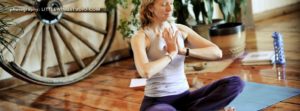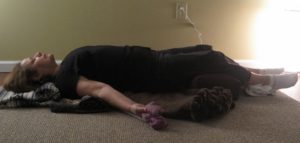Happy Post-Thanksgiving to All,
We’ve been blessed with this practice of restoratives offered up through many teachers and many traditions. I am grateful for their teachings which they’ve shared over the years. Here is a smattering of those who’ve influenced me and my teachings.
My students, my clients, Jillian Pransky, Judith Lassater, Sara Duke, Carmen Molina (my co-captain), Elizabeth Shammash, my Inner Peace Yoga Therapy faculty, Pema Chodron, Donna Farhi, my children (who were willing guinea pigs to try poses out), oddly enough my cat and dog who are the ultimate yogis. There are more influences and gratitude that extend to many others. As I sit here typing away, my mind floats to all of those lovely souls.
This gift of the practice is what I offer to you to stay present, soft and loving with yourself, which will have the undoubtable effect of reaching others. Another gift is the Progressive Relaxation audio at the bottom of this blog post. Enjoy!!
Ong Namo Guru Dev Namo ~ I bow to the teacher within
Breath
Alternate Nostril Breath
This breath invites the calm in, balancing both sides of our nasal passages and our brain. We tend to breath predominately with either the left or right nasal passage and we become unbalanced. A few minutes at the start of a class or practice, can merge the two hemispheres of the brain and allow you to become more receptive.
Retaining the breath after the inhale while keeping both nostrils gently closed.
- Extending the exhale longer than inhale
- Cessation of breath after the exhale, with only one nostril closed
Poses
Mountain Brook
Surfboard
Props: blankets, including one for warmth, stuffed animals or eye bags for hands
Benefits: gently stretches the lumbar spine and para spinal muscles, and gives a release in the diaphragm, quiets the mind and comforting. Gives a sense of security.
2 bolster fold blanket placed lengthwise on mat on top of each other. Make one blanket roll at end of mat for ankle support. Rest of that blanket fills in gap where shin does not meet the floor. Knees will rest on the floor. Top bolster folded blanket roll towards you in a wider roll to fit in chest and shoulder area. One more blanket folded so that its height is the same as the two bolster folded blankets.
Come to all fours straddling the props, release to forearms and then fully recline on props. Ankles rest on small roll at end of mat, shins supported by the rest of that blanket. Rest the rest of your body at hip crease on the bolster fold blankets and lay chest on wider roll of top blanket. Head rests on additional blanket at top, turned to the side. Arms come out to the sides, releasing shoulders down the back and away from the ears. Placing an eye pillow or stuffed animal in palms as they face floor is very grounding and comfortable. Additional blankets for pillows tucked in as needed with student to create boundaries or make more comfortable.
New Version includes laying tops of ankles over padded blocks for further draining of the legs.
Progressive Relaxation
– LISTEN HERE



Leave A Comment